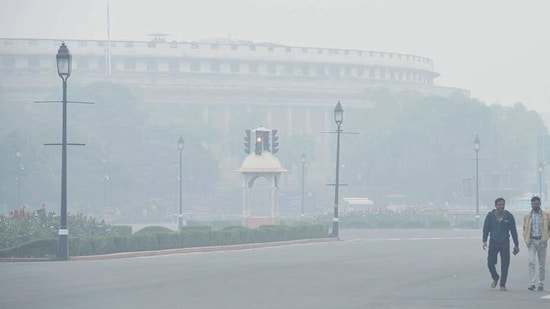New Delhi, November 21:
Delhi’s overall air quality continued to remain in the “very poor” category even as several areas of the national capital registered severe Air Quality Index (AQI), which affects healthy people and seriously impacts those with existing diseases. According to the Central Pollution Control Board (CPCB), AQI in Anand Vihar, Jahangirpuri, Mundka, RK Puram, Rohini and Vivek Vihar was 401 and 500, which is categorised as “severe”.
Authorities have forecast that AQI in Delhi is likely to improve significantly from Sunday owing to relatively strong winds.
On Saturday morning, the AQI in the national capital was recorded at 377 in the morning and 374 in the evening—slightly better on Friday at 370—according to the CPCB. The AQI in the Capital’s neighbouring areas of Ghaziabad (346), Gurgaon (348), Noida (357), Greater Noida (320) and Faridabad (347) was also recorded in the “very poor” category.
An AQI between zero and 50 is considered “good”, 51 and 100 “satisfactory”, 101 and 200 “moderate”, 201 and 300 “poor”, 301 and 400 “very poor”, and 401 and 500 “severe”.
In yet another measure to control the rising air pollution, the Delhi Disaster Management Authority (DDMA) has allowed commuters to stand and travel on Metro trains and buses to let more people use the city’s public transport systems instead of private vehicles.
The DDMA said in its order that 30 standing passengers will be allowed in each Metro train coach. The maximum number of passengers allowed to travel standing will be 50 per cent of the seating capacity in Delhi Transport Corporation (DTC) and Cluster buses, it added.




